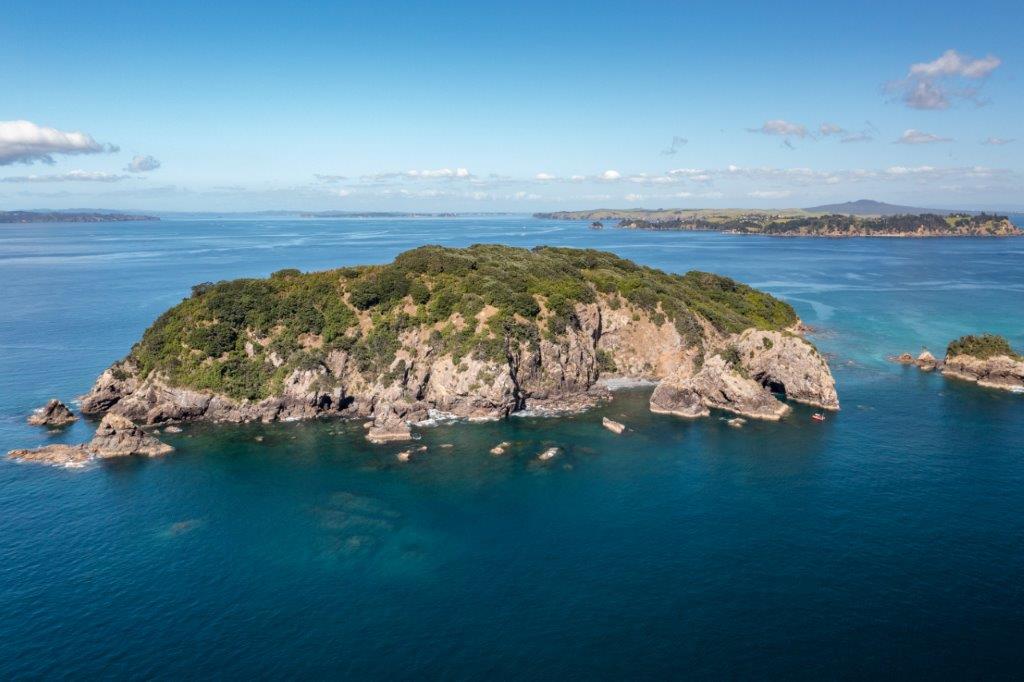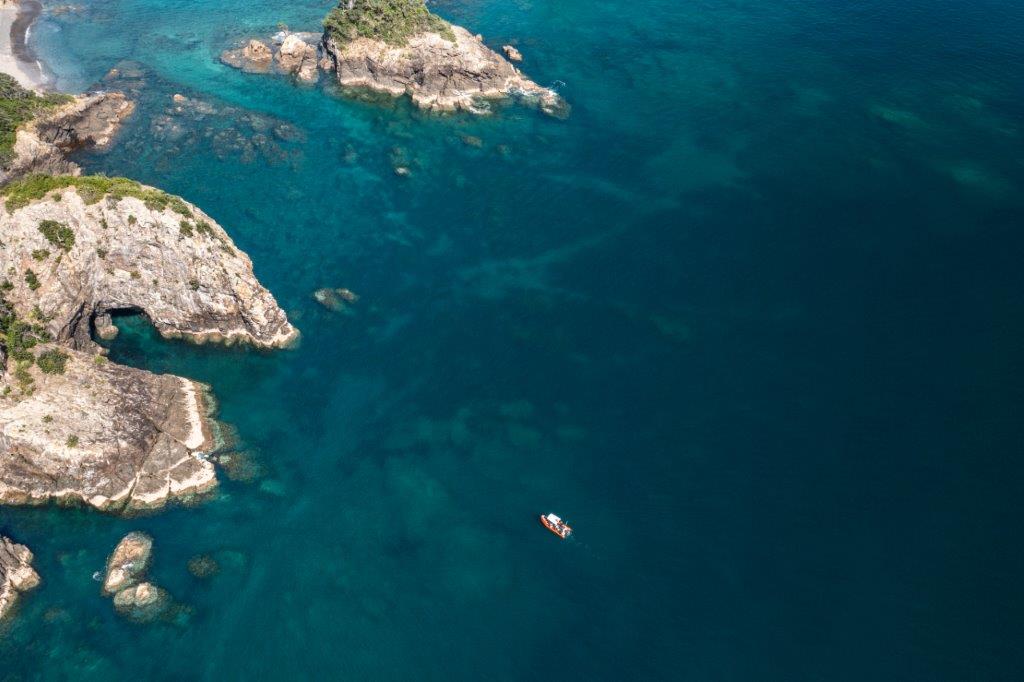The Noises hold a very special interest for seabird lovers. Being home to at least…
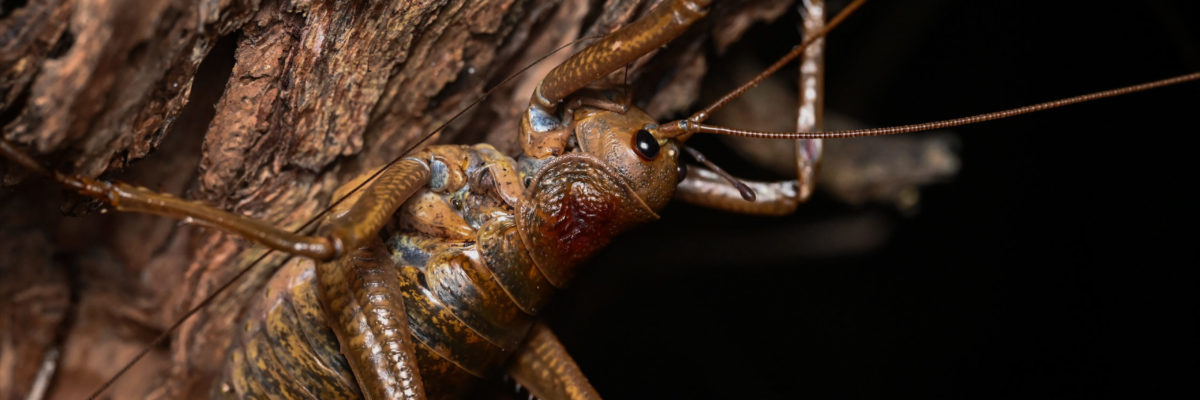
Keeping a watchful eye on wētāpunga
The wētāpunga (Deinacrida heterancatha) is the largest insect in New Zealand. A nocturnal, tree-dwelling creature of the forest, it is a taonga and a striking representative of New Zealand’s spectacular and often bizarre insect fauna. Once distributed across the upper North Island, the wētāpunga existed on the mainland just long enough for its existence there to be documented by early naturalists. As ship rats spread across the North Island after about 1860, the wētāpunga demonstrated its inability to exist in the presence of introduced rodents.
In a meeting of the Wellington Philosophical Society in 1895, Walter Buller noted that the wētāpunga had been: “…extinct on the mainland for twenty-five years or more, but it was still occasionally to be met with on some of the islands in the Hauraki Gulf.” What Buller did not mention (and probably did not know) was that, as well as being extinct on the mainland, wētāpunga were also disappearing from their last haunts in the Hauraki Gulf.
The Hauraki Gulf islands provided the last strongholds for wētāpunga. Formerly, the species was known from Aotea (Great Barrier Island), Waiheke and an unnamed ‘small wooded island’, but by the turn of the century it had become restricted to just one island, Te-Hauturu-o-Toi (Little Barrier Island). For over a hundred years this island in the furthest reaches of the Gulf provided the last and only refuge for wētāpunga. Though safe in the short term, wētāpunga on Te-Hauturu-o-Toi had to share their remaining bastion with kiore (Rattus exulans), a known predator. These wētāpunga also existed under the omnipresent threat of drought, fire, disease and storm damage, all of which can severely impact insect populations. It was clear that wētāpunga needed to expand beyond the island, but they could not do this on their own.
Since 2009 wētāpunga have received much-needed, intensive conservation management. With the only wild population at a fairly low density, it was apparent that captive breeding would be required to produce the numbers needed to successfully restore it to new areas. Auckland Zoo has been involved in restoration work with wētāpunga since 2012. We were remarkably fruitful in our breeding and rearing of the species, and by 2014 had successfully released hundreds of wētāpunga to Tiritiri Matangi and Motuora Islands. We were keen to utilise the skills that we had developed over this time, and expand the project across more islands in the Hauraki Gulf.
With that objective in mind, I first visited Motuhoropapa Island in 2015. The purpose of this trip was to assess whether the habitat on the island would be appropriate for the species, and if we should aim to use it as a future release site. Amongst other things, the abundance of favoured food plants on the island had to be evaluated, so did the amount of refuge spots where the insects could safely hide by day. During the trip I wrote in my notebook that I: “…consider this island to be appropriate for the establishment of this species”. This somewhat dry and restrained (even overly-complacent!) comment fails to capture my exhilaration on the day – the island was by far the best area of rat-free habitat that I’d seen for wētāpunga outside of Te-Hauturu-o-Toi. Pōhutukawa, the dominant canopy tree on Motuhoropapa provided incalculable daytime-refuge sites in the form of deep cavities and voids beneath its flaking bark. The remainder of the forest, including its dense subcanopy of kohekohe, and understory of Coprosma, houpara, wharangi and māhoe, was a living smorgasbord for a foliage-feeding insect.
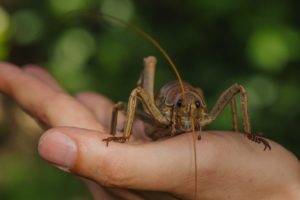
And so began Auckland Zoo’s relationship with the Noises Islands and the Islands’ kaitiaki, the Neureuter family. A total of 1640 wētāpunga, bred and reared at the Zoo, were released onto Motuhoropapa between 2015 and 2017. This included the largest single translocation ever of an insect species in New Zealand – 944 individuals.
The first release of wētāpunga to Motuhoropapa represented the return of the species to an island where it probably had not existed for over centaury. An actual release of the animals on translocation-day is a milestone, but it’s only one part of much broader restoration process. (It tends, however, to be the part which attracts the most attention and back-patting). It’s important not to get overexcited on translocation-day. Feelings of self-congratulation can be supressed until confirmation that the newly-liberated animals have actually survived in their new home; that they are breeding there; and that the island-born young can reach maturity and breed amongst themselves – thus closing the cycle. Wētāpunga are long-lived insects, and juveniles are difficult to detect in the wild. Therefore, several years must pass after the last translocation to confirm that the project has been a success.
On August 22, 2022, the time had come to confirm the continued persistence of wētāpunga on Motuhoropapa Island. The timing of the August 2022 trip was important because it was long enough to be certain that any wētāpunga seen on Motuhoropapa would have completed their entire life-cycle in the wild. Indeed, by this time, some of these wētāpunga could be third-generation Motuhoropaparians – their great-grandparents hatched at the zoo and were released to the island in 2015. Surveys conducted in 2020 told us that there were plenty of wētāpunga on Motuhoropapa, and so we were optimistic that we’d find them again two years later.
The August 2022 trip was the final confirmation that a wild population had successfully established.
Within half an hour of sunset, the marvellous insects began emerging from their day-time refuges and venturing out into the dark forest. Not just one or two, a remarkable 44 wētāpunga were observed within just a couple of hours. Some were perched on tree trunks, others were making their way into the canopy to feed. As is typical for these surveys most wētāpunga seen were adults. Juvenile wētāpunga, especially very small ones, have proven to be difficult to observe in the wild. It may be that these small juveniles spend more time higher in the canopy than the adults do, but we don’t really know for certain. Both male and female wētāpunga were seen during the trip, and one pair was observed in copulation.
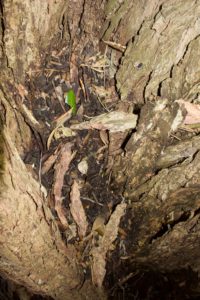
For reasons we can only speculate, Motuhoropapa sustains an exceptionally high-density of wētāpunga. The abundance of the species on this island appears to be many times higher than anywhere else. This high density is not only demonstrated by the numbers seen at night since 2020, but also by the large accumulations of wētāpunga excrement deposited below favoured refuge spots. These wētāpunga lavatories, formed of hundreds of large dry faecal pellets, show nicely the ecological role of wētāpunga in the nutrient cycle.
After a decade of working with wētāpunga (literally a third of my life), it was wonderful to observe the tangible success of the project. It has been an honour and a privilege to work with this famous insect, and play my part in returning it back to the places it belongs. A decade of intensive conservation management has wound back the clock for wētāpunga, once again it is (as Walter Buller said, 127 years ago): “still occasionally to be met with on some of the islands in the Hauraki Gulf”.
Ben Goodwin is Senior Keeper at Auckland Zoo


